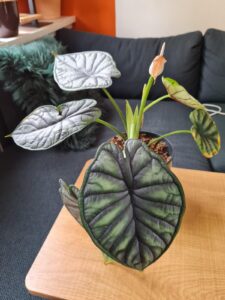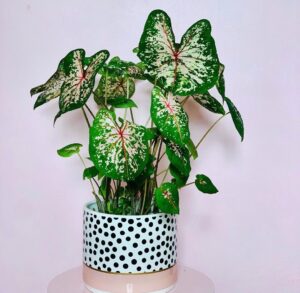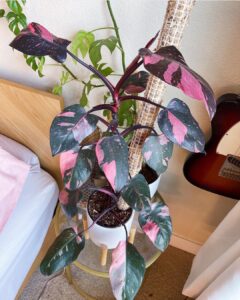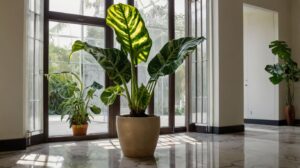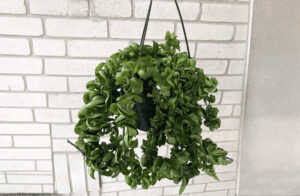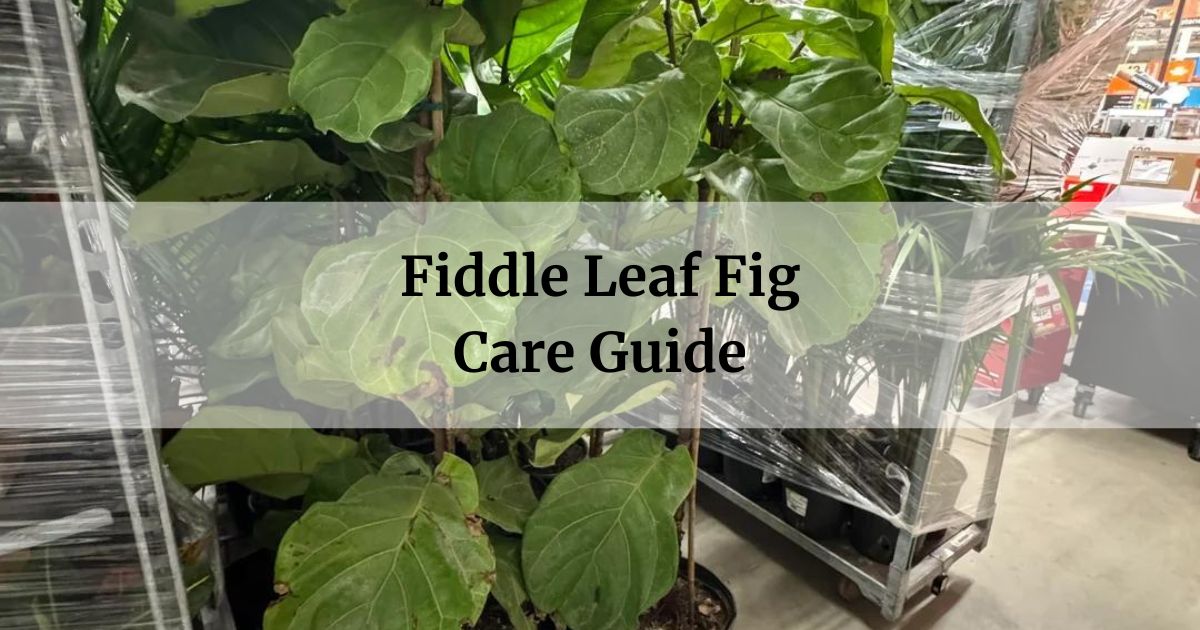
The Fiddle Leaf Fig tree has become hugely popular in home décor, and no wonder – its large, glossy leaves rivals even the most extravagant tropical plants. I’ve struggled at times with finicky Fiddle Leaf Figs (FLF), but have finally found the right conditions to keep them healthy. These statuesque trees demand specific care but are gorgeous statement pieces for a sunny window.
- Pros
- Stunning architectural foliage
- Adds impact
- Filters air
- Cons
- Intolerant of low light
- More finicky than similar figs
- Extremely toxic if ingested by humans or pets
In this article
- 1 Appearance of the Fiddle Leaf Fig
- 2 Light Requirements for the Fiddle Leaf Fig
- 3 Watering the Fiddle Leaf Fig
- 4 Fertilizing the Fiddle Leaf Fig
- 5 Potting the Fiddle Leaf Fig
- 6 Propagation of the Fiddle Leaf Fig
- 7 Growth and Development of the Fiddle Leaf Fig
- 8 Managing Pests and Diseases for the Fiddle Leaf Fig
- 9 Complimentary Plants with your Fiddle Leaf Fig
Appearance of the Fiddle Leaf Fig
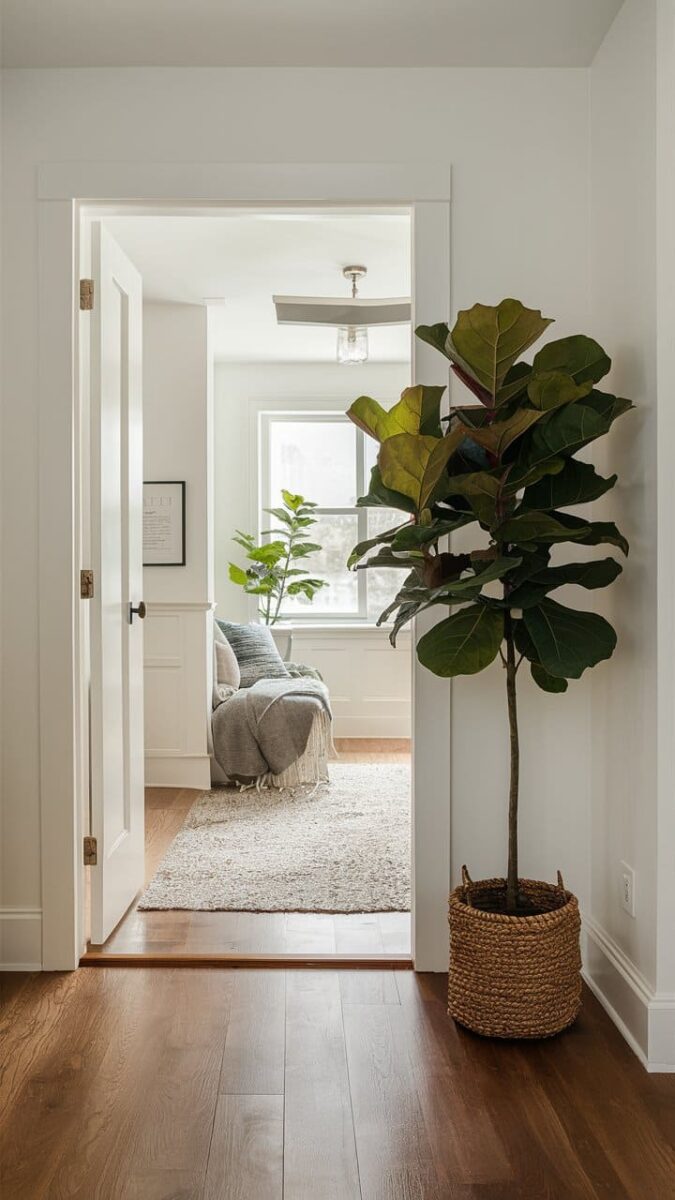
Fiddle Leaf Figs can reach heights over 10 feet tall, but are commonly sold as smaller 2-3 foot trees for home growing. Their leaves provide the true show – they emerge deep glossy green and can span over 2 feet long and 1 foot wide at maturity. You’ll know it’s happy when stunning foliage covers its strong trunk and branch structure. This dramatic foliage perfectly captures the look of slick modern interiors.
- Leaves: Very large, glossy green up to 2 ft long and 1 ft wide
- Size: Trees up to 10 ft, sold as 2-3 ft specimens
- Trunk: Thick, strong branches for leaves to sprawl from
RELATED: 10 Best Tall Houseplants for Adding Impact to Your Home
Great for People who:
Appreciate sculptural, statement foliage and are capable of providing the sun exposure and care needed.
Great for these Spaces:
Bright, airy spaces with south or west facing windows where it can get direct sunlight for 6+ hours. It demands an illuminated perch.
Caring for the Fiddle Leaf Fig
Fiddle Leaf Figs prefer to dry out slightly between waterings and demand excellent drainage. I find the best approach is heavy watering when dry, allowing the top inch to dry before watering again. Prune congested areas to increase airflow. They need direct or very bright light to produce leaves without defects, so adjust placement as seasons change. Inconsistent water or light will cause dropping of leaves, but with these needs met, it’s very rewarding to grow.
- Water when top 1-2” dries out
- Thrives in 12+ hours bright light
Toxicity Level of the Fiddle Leaf Fig
All parts of the Fiddle Leaf Fig are extremely toxic if ingested by humans or pets. However, accidents are rare when cared for responsibly. Monitor children and pets closely, and seek veterinary assistance if consumed.
Light Requirements for the Fiddle Leaf Fig
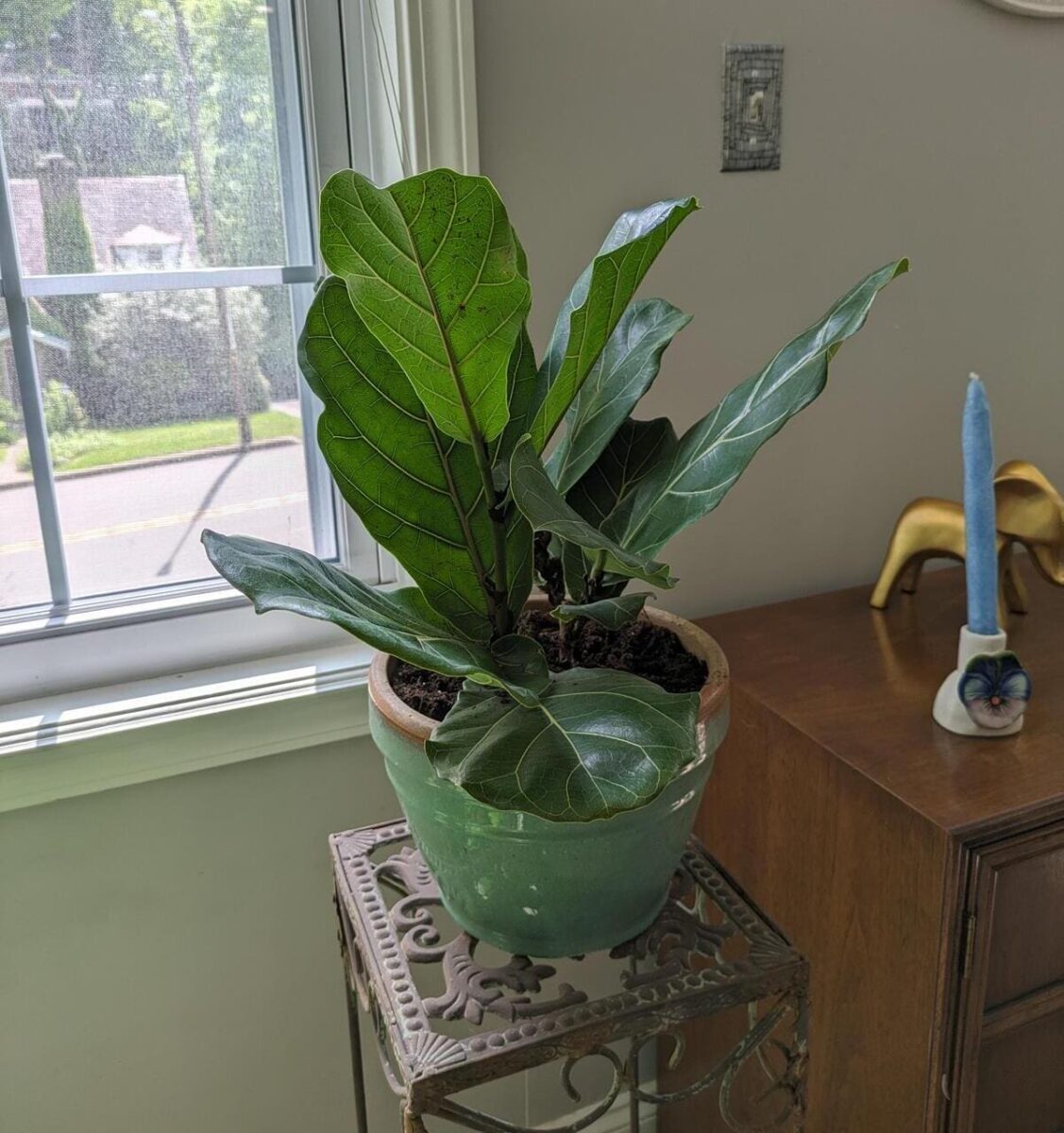
Fiddle Leaf Figs are strict about their light needs. They demand very bright, direct light to prevent dropping leaves and promote strong new growth. South or west facing exposures near windows receive the ideal 12+ hours per day of direct sun. Position at least 5 feet back from the window. Adjust watering up when light levels diminish in fall/winter. Supplemental grow lights help if natural light is low at any time.
| Light Conditions | Effect on Fiddle Leaf Fig |
|---|---|
| Direct Sunlight | Ideal – produces large, dark green leaves |
| Bright Indirect Light | Tolerates if unable to have direct sun but growth may be sparse |
| Low Light | Will drop leaves and not grow without supplemental lighting |
Watering the Fiddle Leaf Fig
When it comes to watering, consistency is key for this fickle plant. Wait for the top 1-2 inches of soil to dry out before watering thoroughly until water drains from the bottom. I find the best technique is to wait between waterings until the leaves start to look less turgid. Succulents like a drier environment than similar indoor plants. Over or underwatering will cause dropping leaves.
- Water thoroughly when top 1-2” of soil dries out
- Water until draining from bottom
- Avoid soggy soil
Fertilizing the Fiddle Leaf Fig
During the growing season from spring to fall, feed monthly with a balanced liquid houseplant fertilizer at half strength. Scrupulous watering is more important than fertilizing for keeping Figs happy. Flush out salts after feeding and do not over-fertilize, which can cause sensitivity. Less is more with fertilizer – focus on light levels and water needs primarily.
| Month | Recommended Dosage |
|---|---|
| Spring-Fall | Liquid half-strength monthly |
| Winter | Less frequent – every 2-3 months |
Potting the Fiddle Leaf Fig
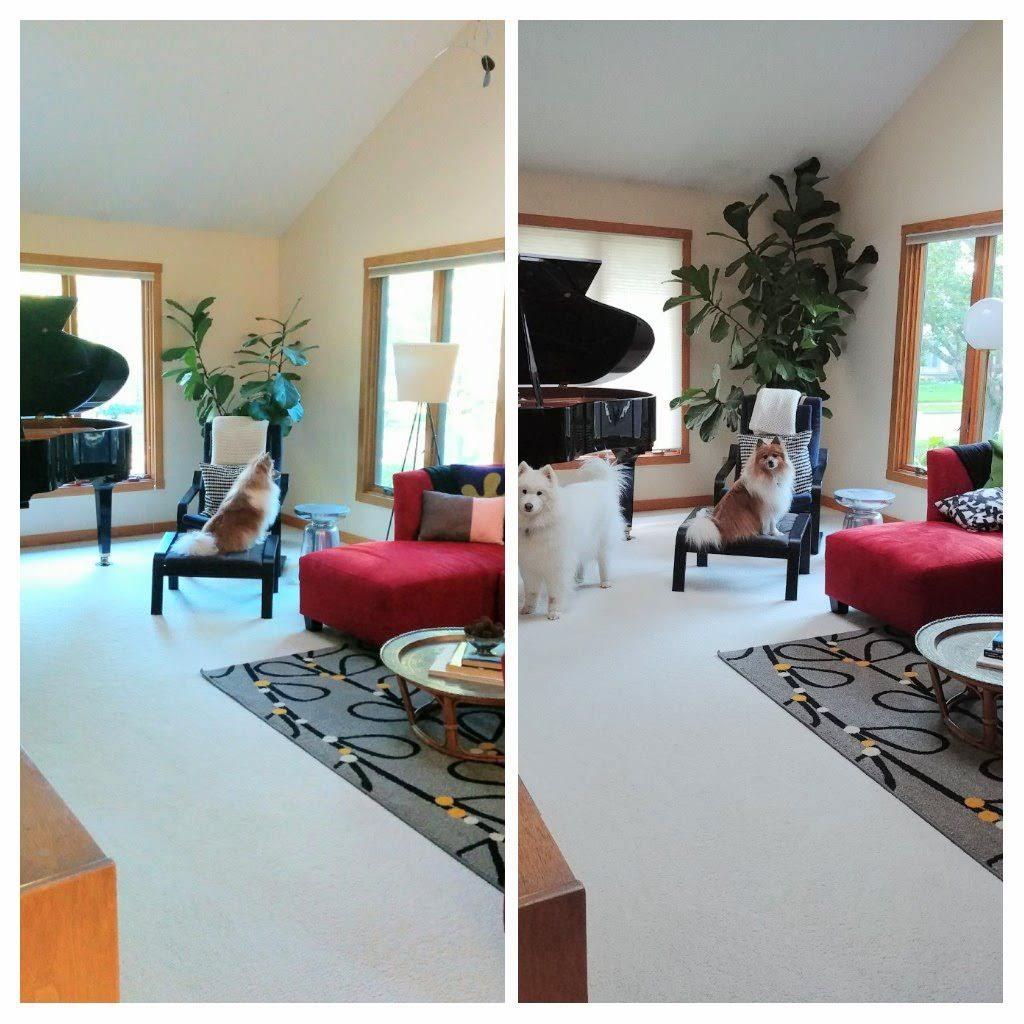
Fiddle Leaf Figs will grow most rapidly in fertile potting soils that drain well. I use a soil-based mixture amended with perlite or bark for drainage and aeration. Repot when roots emerge from the drainage holes, sizing up just 2 inches larger. Loosen circling roots before replanting and firm soil gently after. Water well and do not overpot, which promotes disease.
- Use soil-based potting mix
- Repot when outgrowing pot
- Size up 2 inches, untangle roots
- Gently firm new soil
Propagation of the Fiddle Leaf Fig
Propagation from cuttings in spring or summer increases your Fiddle Leaf Fig collection. Take 6-8″ cuttings from the stems, remove lower leaves, and place in water. Roots form in 3-6 weeks. Once established, cuttings can be potted. To start seeds, scarify hard coats and germinate in a warm area. Young seed-started Figs require patience as they mature their huge leaves. Both methods extend the architecture of these impressive plants.
- Take 6-8″ stem cuttings in spring/summer
- Root in water for 3-6 weeks before potting
- Scarify and germinate seeds warm area
Growth and Development of the Fiddle Leaf Fig
Fiddle Leaf Figs grow best in bright, warm conditions of 70-80°F with moderate humidity levels. During spring and summer, place in direct sun for 12+ hours of growth. Feed monthly with a balanced fertilizer. In fall/winter, growth slows – adjust watering frequency down while maintaining minimal light. Monitor leaf size and shape closely, adjusting your care accordingly. These tweaks maximize your FLF’s potential for architectural foliage impact.
- Warm 70-80°F temperature
- Moderate humidity
- 12 hours+ bright direct light spring/summer
- Monitor leaves year-round
Managing Pests and Diseases for the Fiddle Leaf Fig
Some potential issues are root rot from overwatering and subsequent pests like spider mites. Catch problems early for a healthy FLF. Remove any yellowing leaves to increase air circulation. Prune the plant’s shape if foliage becomes congested. Monitor for signs of pests and quarantine new additions. Reduce watering stress and opt for prevention through clean growing practices year-round.
Complimentary Plants with your Fiddle Leaf Fig
Frequently asked questions
Why are leaves dropping?
Check light, water, or insects. FLFs are sensitive – address stressors and leaves should regrow.
How to get my FLF taller?
Provide optimal sun, fertilizer, and allow ample drying time between waterings. Prune lower leaves if crowded.
Do FLFs continue growing when potted?
Yes, they will reach mature heights over many years with excellent care and may eventually need pruning to control size.
The Fiddle Leaf Fig demands specific conditions to truly shine, but its architectural foliage pays off for the effort.
Happy gardening!


